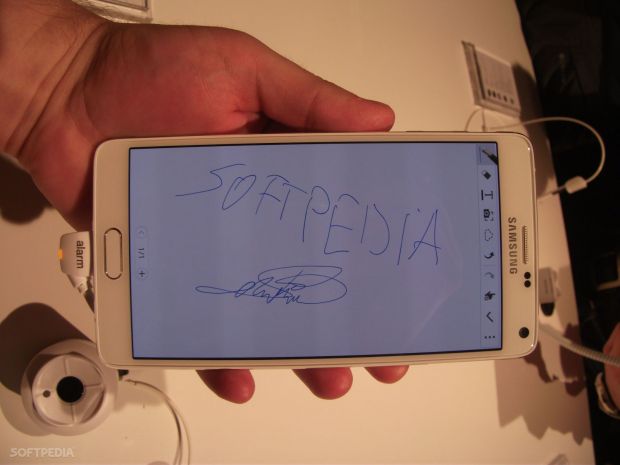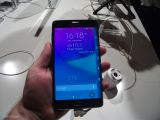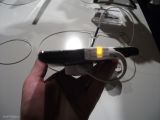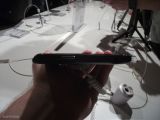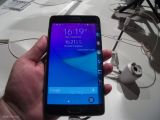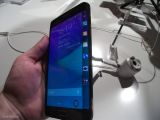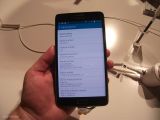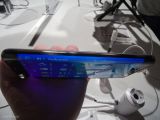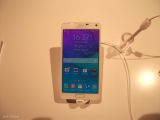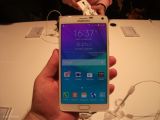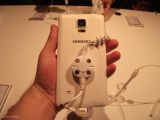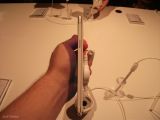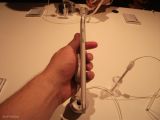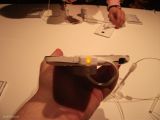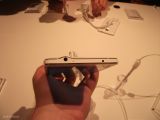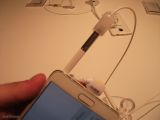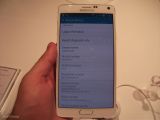Now that Samsung has taken the wraps off its next two Galaxy Note phablets, let’s see what the differences between these devices are, and whether or not it’s worth getting the Galaxy Note 4 or Galaxy Note Edge.
Even though Samsung announced that the Galaxy Note Edge would be a variation of the Galaxy Note 4, they are basically different phones as they offer completely different experiences.
But first of all, let’s talk about form factor and design, which is very important for a large pool of customers. If the first thing you check about a phone before making your purchase is the design, then you should know the Galaxy Note 4 is larger and thicker than the Galaxy Note Edge, even if only by a small margin.
The Galaxy Note 4 measures 153.5 x 78.6 mm and is 8.5mm thin, but Galaxy Note Edge is only 151.3 x 82.4 x 8.3mm, which makes it as thin as the previous Galaxy Note 3 model. For some, the change may not be significant, but for a flagship smartphone even 0.1mm is important.
Obviously, the Galaxy Note Edge is also lighter than the Galaxy Note 4, as the former weighs only 174g, whereas the latter is about 2g heavier.
Now, Galaxy Note 4 uses a 5.7-inch Super AMOLED display that supports amazing QHD (2560 x 1440 pixels) resolution. On the other hand, the Galaxy Note Edge sports a curved Edge display that measures 5.6-inch, but supports the same QHD resolution.
However, Galaxy Note Edge’s screen has 2560 x 1600 (1440 + 160) pixel resolution on both parts of the display. Both phablets are protected with Corning Gorilla Glass 3 and pack the same amount of storage (32GB) and RAM (3GB).
Samsung also claims that a Galaxy Note Edge variation with 64GB inside will be available on the market as well, but it will likely be more expansive than the 32GB model.When it comes to hardware, there are no differences at all. Samsung Galaxy Note 4 and Galaxy Note Edge are powered by the same Qualcomm Snapdragon 805 or Exynos 5543 processors. The same goes for the rear and front-facing cameras, which are the same for both phablets.
Another major difference between the two smartphones is the battery. While Galaxy Note 4 is equipped with a 3220 mAh battery, the Galaxy Note Edge features a slightly smaller 3,000 mAh battery.
The fact that Galaxy Note Edge sports a slightly smaller display than the Galaxy Note 4 does not justify the inclusion of a smaller battery at all.
However, I can understand Samsung’s reasoning on this one, as the company probably thinks that Galaxy Note Edge owners will wake up their phones less frequently due to the smaller OLED display on the edge where they can see basic stuff like the clock, weather info, sports scores, phone’s settings, notifications and others.
I doubt though that Galaxy Note Edge will offer a better battery life than the Galaxy Note 4 in day-to-day use, even with that in mind.
So, what do you think about Samsung Galaxy Note Edge’s curved display? Is it just a gimmick or it may become very useful once developers start releasing apps for it?
Also, do you think Samsung Galaxy Note 4 is a real improvement over the Galaxy Note 3?
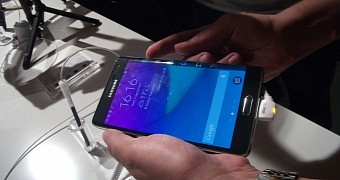
 14 DAY TRIAL //
14 DAY TRIAL // 